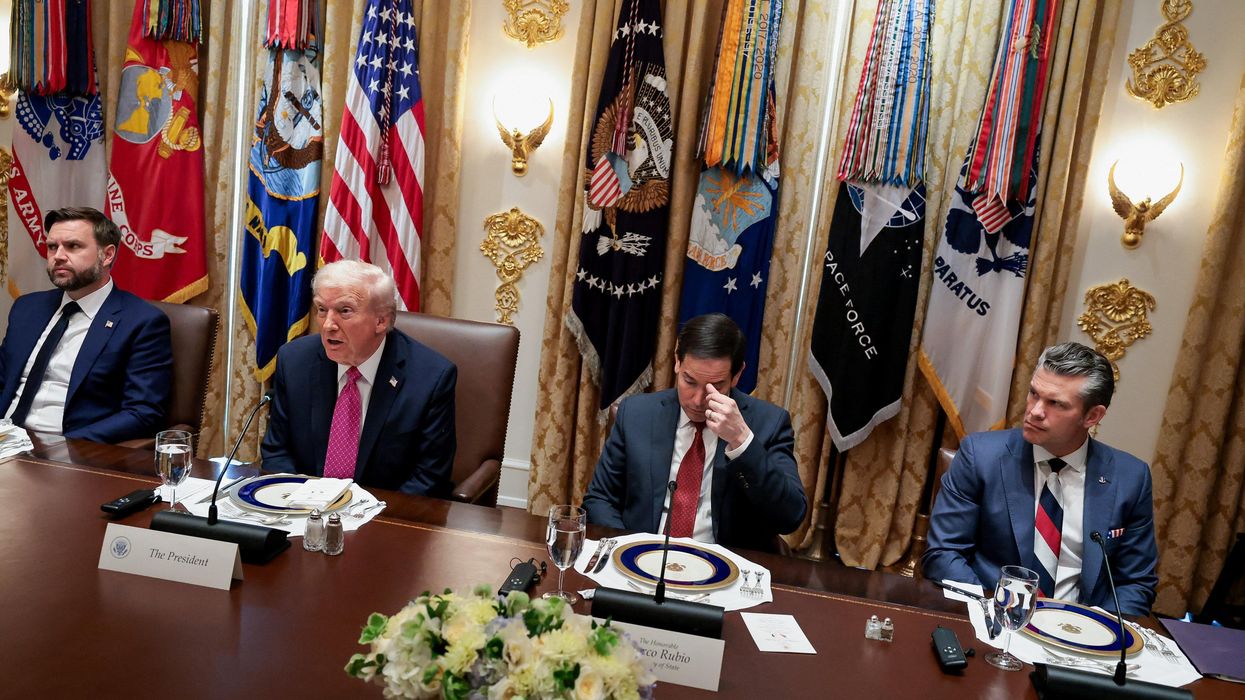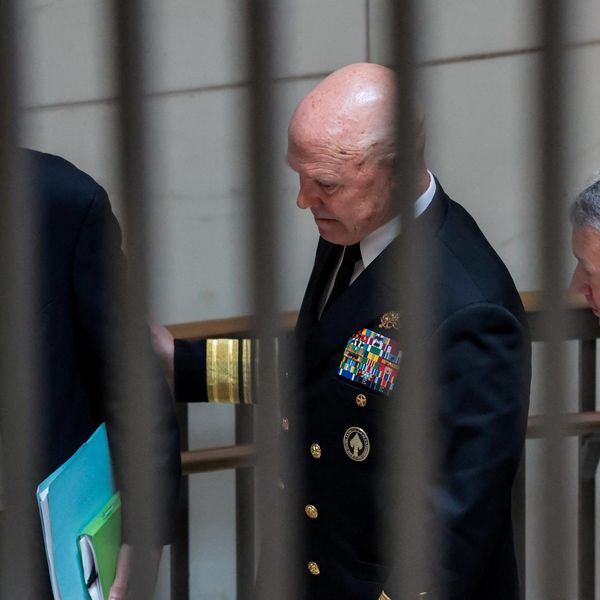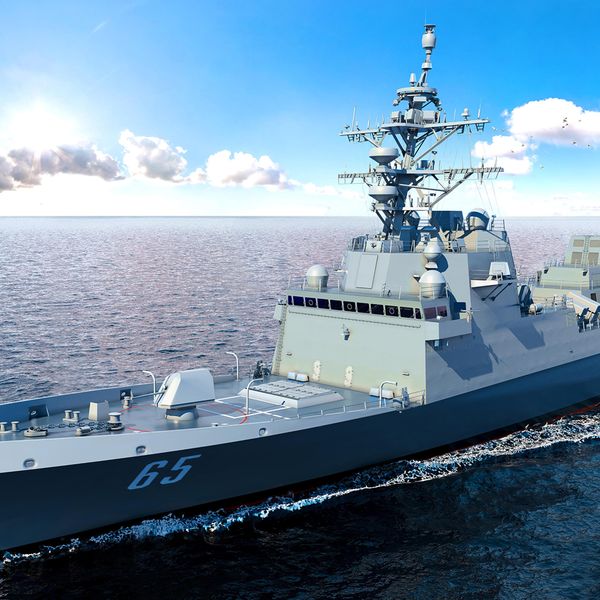The United States has dozens of formal treaty allies around the world, but there has also been a tendency over the last thirty years to identify many other states and even armed groups as U.S. allies despite the lack of any binding obligations to them.
It is commonplace to see almost any government or group that the United States works with described as an ally in official government statements, policy analysis, commentary, and news coverage. This label is applied to states as different as Saudi Arabia and Ukraine. In recent years, China hawks have taken to referring to Taiwan as an ally when that is precisely what it hasn’t been for forty years. Despite the lack of any binding commitment, referring to Israel as an ally is de rigueur. This misuse of the label is then paired with an expansive definition of U.S. interests that treats the needs and wants of these so-called “allies” as if they are vitally important to America as well.
The implication of the ally label is that the United States is obliged to support and defend them all, and “failing” to do so prompts hawkish criticism that an administration has “abandoned” an ally. In some cases, the overuse of the name is just sloppy use of language, but more often it is a deliberate choice intended to build political support for greater U.S. backing for governments that are not owed anything from Washington. Naming a state or group as an ally is often an attempt to conjure a more significant relationship into being, and this can lead to a proliferation of new commitments that have never been seriously debated or voted on. This can lead to absurd situations where the U.S. ends up taking the side of clients relabeled as allies against more important treaty allies, as it did when Trump reneged on the nuclear deal. It can even lead to scenarios where the U.S. backs armed groups that are in direct conflict with at least one of its own treaty allies, as it has done in Syria with support for the YPG.
During the first Trump impeachment debate, some of the House Democrats making the case that the president had abused the power of his office for personal ends insisted on exaggerating the importance of the relationship with Ukraine for rhetorical purposes. Rep. Adam Schiff matter-of-factly described Ukraine as a “United States ally” when it was not, and he kept using that label for Ukraine again and again. This misidentification of Ukraine as an ally was a common one during and after the impeachment proceedings, and if anything it has only gotten worse in the years since then. The habit of calling Ukraine an ally or even a “key ally” is a bipartisan one.
Now Biden faces charges from the right of abandoning this Ukrainian “ally” because he is not taking the most hard-line anti-Russian position possible. This language seeps into ostensibly objective news coverage so that the average reader or viewer would simply take Ukraine’s ally status as a given. Earlier this year, NBC News ran a story in April with the title “Russia amasses troops near U.S. ally Ukraine,” which made it seem as if Washington had an obligation to protect Ukraine when it does not.
Much the same thing happens with Taiwan. Taiwan has the unusual distinction of having been a treaty ally in the past, but it has not been one since the Carter administration ended the Sino-American Mutual Defense Treaty. That hasn’t stopped advocates for greater U.S. support for Taiwan from throwing around the ally label with abandon. Many of the arguments for making an explicit security commitment to Taiwan and coming to Taiwan’s defense rely on dubious appeals to alliance credibility that make no sense unless they view Taiwan as if it were a formal ally.
Treaty allies still matter more to the United States than the growing number of “allies” that it has been acquiring since the end of the Cold War, because they are perceived to be more deserving of U.S. support. A recent University of Illinois/University of Chicago/Chicago Council of Global Affairs survey of 700 international relations scholars that work in government, think tanks, and U.S. universities showed a significant preference for supporting treaty allies over other kinds of governments and other political actors. Even when everything else in a hypothetical scenario remained the same, there was much greater support for the U.S. backing treaty allies in a conflict with “our adversaries” in the Middle East than there was for other kinds of groups.
Overall, the survey found that “U.S. foreign policy experts place a significantly higher value on America’s treaty allies than other types of international actors.” The survey is an interesting snapshot of how IR scholars think about these questions, but even in the choices that it offered to its respondents it reproduced the same confusion over who gets counted as an ally. The scholars were asked if they would favor supporting a “non-treaty ally” in a fight against an adversary, which raises the obvious question: what is a non-treaty ally? What, if anything, does the U.S. owe to such “allies”? The respondents were less likely to want to support a “non-treaty ally” than one with a treaty, but the “non- treaty ally” still received majority support. The reflexive impulse to back “allies” even when there is no obligation to do so is widely shared.
Another curious aspect of the survey was the decision to use a “fight against our adversaries in the Middle East” as the way to gauge the scholars’ levels of support for different actors. It is questionable whether the U.S. would even have adversaries in the region were it not for its entanglements with regional clients. Since the U.S. has no treaty allies in the region except for Turkey, it is strange to ask if Washington would support treaty allies in such a fight when the only reason why most of our treaty allies would be involved in a Middle Eastern conflict is if they were joining in one of our military campaigns.
The U.S. has a bad habit of acquiring clients and partners and then exaggerating their importance to justify continued support when the original reasons for the relationships no longer exist. Many U.S. clients are holdovers from the Cold War and now U.S. support for them has become redundant at best and harmful at worst. Others are more recent additions, such as Ukraine, that serve no discernible American interests, but because they provide an excuse for confrontational policies against other states they are reinvented as “key allies.”
The United States will have great difficulty in reining in its foreign policy ambitions if it cannot learn to distinguish between its genuine allies and the many partners and clients it has acquired over the decades. The first step in reducing unnecessary overseas entanglements is to acknowledge that Washington has far fewer real allies than our political leaders would have us believe. Not all security relationships are created equal, and many of the relationships that the U.S. has with its many non-allies could be downgraded or even ended without compromising its security at all.
















